Leaders from California State University, East Bay and San Francisco State University share how their virtual advising efforts have supported students and which barriers remain
Oct. 21, 2020
This year, the college experience looks drastically different. Once bustling student centers, packed libraries, and buzzing computer labs are now empty. Students, professors, and administrators are staying home instead of commuting to campus. But despite the challenges of campus closures due to the pandemic, our two local California State University (CSU) campus partners—California State University, East Bay (CSUEB) and San Francisco State University (SFSU)—used technology and people power to make virtual learning accessible for their students.
Over the summer, I had the chance to speak with Provost Edward Inch of CSUEB and Associate Dean of Undergraduate Education, Kimberley Altura, at SFSU, to hear how each of their campuses have navigated pandemic challenges to keep students safe, connected, and on track to achieve their goals. In the interviews below, you’ll learn how each of their campuses have adapted their pre-pandemic plans to utilize academic advisors and new technology to support students.
Before the pandemic struck, CSUEB and SFSU had already created visionary initiatives to grow their campuses’ advising capacity. Each initiative focused on supporting advisors and predictive analytics, a growing movement in higher education of using data, statistics, and machine learning to identify students who may benefit from targeted supports, such as advising. As a former academic support director in the CSU system, I was excited to see both campuses continue to center the important role of an advisor in a student’s college experience, particularly for campuses as diverse and dynamic as CSUEB and SFSU.
Less than a year ago, SFSU planned to dramatically lower its advisor-to-student ratio for first-year students. Across the Bay, CSUEB envisioned a more simplified “caseload” advising system to reduce the number of “student handoffs” between advisors. Both campuses developed plans to use data and technology to proactively reach out to students with advising, resources, and other student supports.
Then, in the middle of planning, a global pandemic upended their plans. Following shelter-in-place orders, both campuses physically closed, virtually opened, and had to respond to a new set of challenges.

Once an option, online courses are now the norm. Due to physical campus closures, there are fewer unscheduled opportunities for students to interact with faculty members, campus support services, and other students. Student life has become harder. CSUEB and SFSU serve a significant number of college students who come from low-income communities and/or are first-generation college-goers. Now those students are balancing online classes with jobs, caretaking, spotty internet connections, and an uncertain future.
But as you’ll see in the interviews, the campuses have adapted to meet their students’ evolving needs. Under Dr. Inch’s leadership, CSUEB converted in-person courses and advising services to online in a matter of days. As the campus shifted operations with the threat of COVID-19, students turned to their advisors to help them navigate the challenges. Supported in part by the Stupski Foundation, CSUEB’s efforts to move from a passive advising model to a proactive caseload advising model provided students a go-to person to ask a diverse array of questions—such as, what courses to take, where to get COVID-tested, how to plan for a summer term, etc. In an online setting, students were able to access advisors during extended evening hours, dramatically driving up the number of appointments. CSUEB even set up chatbots that answered students’ questions via text. At its height, the number of student inquiries increased from an average of 3,000 weekly questions to 10,000. COVID-19 further propelled the impact of advisors on student success into the spotlight—and rightfully so.


